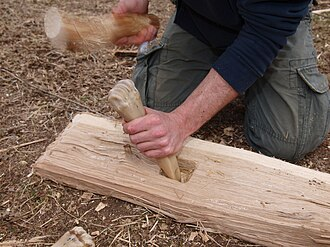When it comes to timeless tools, the cold chisel stands as an unassuming yet indispensable piece of craftsmanship. If you’re not familiar with this tool, don’t worry—you’re not alone. However, for seasoned veterans in the world of metalworking or DIY enthusiasts, the cold chisel is as familiar as an old friend. Let’s dive deep into the history, uses, and importance of this underrated but powerful tool.

What is a Cold Chisel?
At its core, a cold chisel is a hand tool designed for cutting cold metals. The term “cold” doesn’t refer to temperature but rather distinguishes it from tools used to cut heated, softened metals. Typically made of hardened steel, the cold chisel features a sharp, beveled edge that allows it to cut through metal, stone, and even concrete with precision.
This tool might seem simple, but its effectiveness lies in its straightforward design. With the right technique, a cold chisel can help you achieve intricate cuts and break down tough materials without the need for expensive machinery.
A Brief History of the Cold Chisel
The origins of the cold chisel date back centuries, with its roots in ancient blacksmithing. Before the advent of modern machinery, artisans relied on chisels to shape metals and stones for tools, weapons, and architecture.
As industrialization surged, the cold chisel evolved into a more specialized tool, catering to machinists, builders, and hobbyists. Today, it remains an essential item in toolkits worldwide, appreciated for its durability and versatility.
The Anatomy of a Cold Chisel
Understanding the components of a cold chisel can help you appreciate its functionality:
- Blade: The sharp, beveled edge at one end, designed for cutting or scoring metal.
- Shank: The sturdy body of the chisel, which absorbs the force of the hammer blows.
- Striking Head: The opposite end, built to endure repeated strikes from a hammer.
Each part of the chisel is carefully engineered to maximize efficiency and withstand the demands of heavy use.

Key Uses of a Cold Chisel
Wondering how a cold chisel fits into your toolkit? Here are some of its most common applications:
- Cutting Metal: From bolts to sheet metal, the cold chisel is perfect for making precise cuts.
- Shaping Materials: Use it to refine the shape of metal or stone, especially in projects requiring intricate detail.
- Removing Rivets and Bolts: A cold chisel can break apart stubborn bolts or rivets that are too corroded to unscrew.
- Concrete Work: It’s not just for metal! Cold chisels can chip away at concrete or masonry for a clean, finished look.
Whether you’re working on a car, restoring furniture, or constructing a building, the cold chisel is a versatile ally.

Choosing the Right Cold Chisel for the Job
Not all cold chisels are created equal, so it’s important to pick the right one for your specific task. Consider these factors:
- Material: Opt for a chisel made of hardened steel to ensure durability.
- Size: Larger chisels are ideal for heavy-duty work, while smaller ones are better for delicate tasks.
- Edge Type: Some chisels have a flat edge for general use, while others have a pointed tip for precision work.
By matching the chisel to your needs, you can maximize its efficiency and lifespan.
Mastering the Technique: How to Use a Cold Chisel Effectively
Using a cold chisel isn’t just about brute force—it requires a bit of finesse. Here’s how to do it right:
- Prepare Your Workspace: Secure the material you’re working on with clamps or a vise to prevent movement.
- Mark the Cutting Line: Use a marker or scribe to outline where you want to cut.
- Hold the Chisel at an Angle: Position the beveled edge against the material at a slight angle.
- Strike with Precision: Use a ball-peen or club hammer to deliver sharp, controlled blows to the striking head.
- Maintain a Steady Pace: Gradually work along the cutting line, applying consistent force.
Remember, practice makes perfect. With time, you’ll develop the skill to handle even the toughest materials.

Caring for Your Cold Chisel
To ensure your cold chisel stays in top condition, follow these maintenance tips:
- Keep it Clean: Wipe down the chisel after each use to remove debris and moisture.
- Sharpen the Blade: Use a sharpening stone or grinder to maintain the beveled edge.
- Inspect for Damage: Regularly check for cracks or excessive wear, especially on the striking head.
A well-maintained chisel will last for years, making it a worthwhile investment.
Why the Cold Chisel Deserves More Attention
In an age dominated by high-tech tools and machinery, the cold chisel may seem outdated. But its simplicity and reliability make it a valuable asset for professionals and DIYers alike. It’s a testament to the idea that sometimes, the best tools are the ones that stand the test of time.
Conclusion
The cold chisel might not be the flashiest tool in your arsenal, but it’s certainly one of the most dependable. Its rich history, versatility, and practicality make it a must-have for anyone working with metal, stone, or concrete. So, whether you’re a seasoned pro or a curious beginner, don’t underestimate the power of this humble tool. With the right technique and care, the cold chisel can help you tackle even the toughest projects with ease.